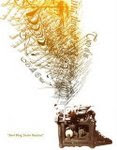Recently, I have received a lot of inquiries regarding Sarawak design in my blogs. Therefore in this blog post I would like to generally touch on this topic. I say' generally' because Sarawak has about 27 ethnic groups and it would be impossible to talk in specifics. Sarawak design motifs are derived from their immediate surroundings especially the rich and diverse eco-sysyems that the natives have over many generations and ages being able to live in co-existence or harmony with. Inspirations can be taken directly from nature's rich flora and fauna - curls of ferns,flow of rivers, shapes of lizards and crocodiles, fruits and flowers, insects, and many other various wildlife and plant species.
In many instances the art has been transferred from many generations ago till today, though recently there has been an upsurge in cottage industries that produce items for the tourism market based on local ethnic designs taught by experts not necessarily of blood lineage. Much of the designs have passed the test of time though new elements are introduced as expected.
Sarawak ethnic designs can be applied on many materials or surfaces. Chiefly among them are wood, ceramic, stones, rattan, textile, beads, human skin (tattoo) and the more modern paper.
In modern designs where motifs are stylised, the images become symbolical. However in more traditional designs details of legendary figures or mythical beings, give much aura of spirituality and when embodied into the designs are believed to arouse the magic or spiritual into the cultural objects.
I guess Sarawak's ethnic designs will become more popular in future due to awareness in tourism and the quest for a cultural presence and identity in an increasingly globalised world.
I hope the collection of Sarawak designs as they are implanted, embedded, painted, carved or woven as shown below will indicate the vigour and uniqueness of these designs.
Examples of Sarawak Ethnic Designs

Burial Pole

Hornbill Mast Head


































































